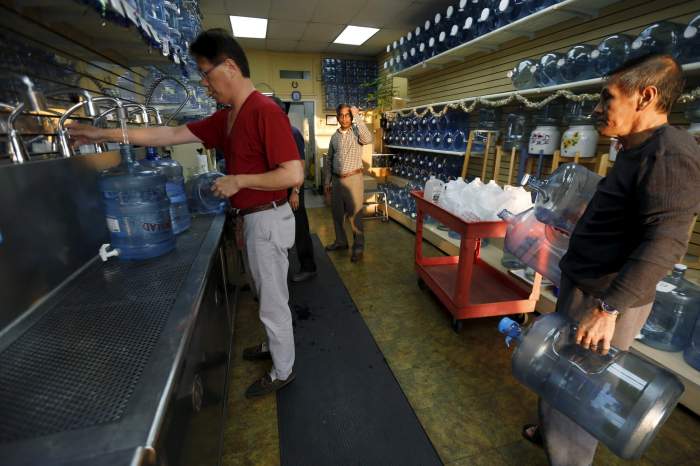By Lucia Mutikani
WASHINGTON (Reuters) – U.S. import prices fell for a second straight month in December as the cost of petroleum products tumbled and a strong dollar curbed prices of other goods, leading to the largest year-on-year drop in more than two years.
The report from the Labor Department on Wednesday added to weak producer and consumer prices data in strengthening economists’ expectations of a pause in interest rate increases from the Federal Reserve in the near term.
Fed Chairman Jerome Powell said last week that low inflation afforded policymakers “the ability to be patient and watch patiently and carefully” while they monitored economic data and financial markets for risks to growth. The U.S. central bank has forecast two interest rate increases this year.
“In 2019, we see a weaker inflationary impulse from abroad on domestic prices,” said Jake McRobie, a U.S. economist at Oxford Economics in New York. “This will give the Fed some breathing room in adjusting rates slowly.”
Import prices declined 1.0 percent last month after dropping 1.9 percent drop in November. Economists polled by Reuters had forecast import prices decreasing 1.3 percent in December.
In the 12 months through December, import prices fell 0.6 percent, the biggest year-on-year drop since September 2016, after rising 0.5 percent in November. Prices declined 0.6 percent in 2018, the first calendar year decrease since 2015, after surging 3.2 percent in 2017.
U.S. financial markets were little moved by the data.
Last month, prices for imported fuels and lubricants fell 9.2 percent after tumbling 13.3 percent in November. Imported food prices edged up 0.1 percent in December after dropping 2.2 percent in the prior month.
There were decreases in the cost of capital goods, but prices for motor vehicles and consumer goods eked out small gains. Excluding fuels and food, import prices were unchanged last month after slipping 0.1 percent in November.
The so-called core import prices rose 0.6 percent in the 12 months through December. Imported core inflation is being restrained by the strong dollar, which gained about 7.5 percent last year against the currencies of the United States’ main trade partners.
Import prices do not include tariffs. The cost of goods imported from China was unchanged last month. Prices for imported Chinese goods fell 0.2 percent in 2018 and have not increased on a calendar year basis since 2011.
DOWNSIDE RISKS
Against the backdrop of low inflation and slowing growth in China and Europe, some economists believe the Fed will not hike interest rates in the first half of 2019. There are signs the U.S. economy slowed at the end of 2018, with consumer and business sentiment surveys weakening sharply in December.
“Downside risks are developing for U.S. inflation,” said Ryan Sweet, a senior economist at Moody’s Analytics in West Chester, Pennsylvania. “Therefore, the Fed has the green light to pause until June, if not longer.”
But an ongoing partial shutdown of the federal government, which has delayed the release of data from the Bureau of Economic Analysis and Census Bureau, is making it hard to get a good read on the economy and could complicate policy decisions.
The government partially shut on Dec. 22 amid demands by President Donald Trump that the U.S. Congress give him $5.7 billion this year to help build a wall on the country’s border with Mexico. The longest government shutdown in history has delayed the release of December retail sales and November business inventory data, which were scheduled for Wednesday.
The publication of November construction spending and trade figures has also been delayed, and the December housing starts and building permits report due on Thursday is likely to be postponed. Economists estimate the shutdown is cutting at least two-tenths of a percentage point from quarterly gross domestic product growth every week.
Other data on Wednesday suggested a recent moderation in mortgage rates was boosting the struggling housing market. The number of people seeking loans to buy a home and to refinance one rose to an 11-month high last week, the Mortgage Bankers Association said.
Separately, homebuilders sentiment climbed this month, buoyed by optimism over sales conditions now and over the next six months. Homebuilding weighed on economic growth for three straight quarters in 2018.
“While housing activity probably hasn’t changed drastically over the past month, the improvement in the NAHB survey suggests that the recent decline in mortgage rates likely has boosted activity somewhat,” said Daniel Silver, an economist at JPMorgan in New York.
(Reporting by Lucia Mutikani; Editing by Andrea Ricci)























